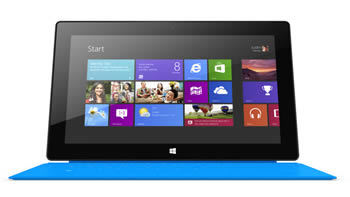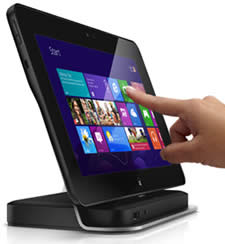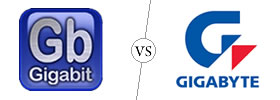Difference between Microsoft Surface RT and Dell Latitude 10 Windows Tablet
Key Difference: The Microsoft Surface RT is a tablet that features a 10.6-inch TFT HD capacitive touchscreen with approximately 148 ppi density. The screen affords the true 16:9 aspect ratio. However, the OS is not compatible with old Windows PC programs. The Latitude 10 tablet is quite slick and light weight at 658 grams. The devices comes with a 10.1-inch IPS (1366 X 768) Wide View Angle LCD capacitive touch screen and is powered by a 1.8 GHz Intel Atom Z2760 processor.
 The market for bigger, better and more able smartphones is increasing. People are getting bored with the regular phones that would just place calls or send text message, now the phones need to be able to do many other things to even be considered as a choice. The phone should allow the users to surf the internet, check e-mails, record their schedules, find things on the internet, understand their speech, etc. They have become less phones and more personal secretaries. Now, it goes even further and tablets have come into the picture. Tablets have the portability of a phone and the functions of a laptop. Some tablets even allow users to place calls. Microsoft, which was originally a Desktop manufacturer, has now shifted focus on creating smartphone operating systems, laptops, and even tablets. The Microsoft Surface RT was launched in November 2012.
The market for bigger, better and more able smartphones is increasing. People are getting bored with the regular phones that would just place calls or send text message, now the phones need to be able to do many other things to even be considered as a choice. The phone should allow the users to surf the internet, check e-mails, record their schedules, find things on the internet, understand their speech, etc. They have become less phones and more personal secretaries. Now, it goes even further and tablets have come into the picture. Tablets have the portability of a phone and the functions of a laptop. Some tablets even allow users to place calls. Microsoft, which was originally a Desktop manufacturer, has now shifted focus on creating smartphone operating systems, laptops, and even tablets. The Microsoft Surface RT was launched in November 2012.
The Microsoft Surface RT is a tablet that features a 10.6-inch TFT HD capacitive touchscreen with approximately 148 ppi density. The screen is pretty decent in terms of resolution and shows clear, sharp images. The screen affords the true 16:9 aspect ratio which matches most movies and shows, eliminating the black bars that pop up. The tablet runs on the Windows OS, but has a huge lacking feature. The OS is not compatible with old Windows PC programs such as VLC, Photoshop Elements, etc. This is one of the reasons for the tablet not being so popular even after the amazing design and other attractive features. In order to run the old PC programs, one would require Windows 8 with an Intel processor, which is offered in the Microsoft Surface Pro.
The device has a slab form that makes it look thicker and heavier than it actually is. The device is only 9.4 mm thick, same as the iPad; however, the slab form that has not been tapered towards the end makes it seem thicker. The tablet is a little heavier compared to other devices because of the extra inches on the screen. The device is quite slick, which makes it easier to grip but more prone to slipping through the fingers. The device comes with a built-in kickstand that helps it stay upright when placed on a surface. The device is covered in a VaporMg casing, which according to the company, makes the device scratch and water-resistant. The device also has an intriguing feature, which is a cover that doubles as a keyboard. The sleek and flat keyboard has an aesthetic appeal and is also productive.
On top of the device when facing front in landscape mode, there is an ambient light sensor along with the front facing 1.2 MP camera. On the bottom bezel is the Windows Home sensor that takes the user to the start screen or the last app accessed. On the right side of the device, there is a speaker grille, a Micro-HDMI port, a full USB 2.0 port, and the power port. The left side has an additional speaker grille, a headphone jack, and a volume rocker. The kickstand is said to be a bit difficult for some people, while other claim that the stand was pretty smooth and easy to access. Under the stand, resides the microSD port, while there are magnets on the bottom to attach the Touch and Type keyboard covers. The device also has a 1.2 MP rear camera, in case anyone would like use it take photos.
The tablet is powered by a 1.3 GHz Quad-core Cortex-A9 and comes in 32 and 64 GBs variants. The device feature 2 GB RAM. The processor provides enough power to allow the swiftly shifting between apps and windows. The tablet supports 802.11 a/b/g/n Wi-Fi support, Bluetooth 4.0, a gyroscope, an accelerometer, and a built-in compass, but no GPS. The device houses a 31.5 W-h battery that drained pretty quickly according to CNET. The main problem that comes with this device is that it is less of a tablet and more of an even more portable laptop. The design is obviously appealing, but in terms of features and price, maybe going for Microsoft Surface Pro.
 Dell is a popular computer manufacturer, which has made a name for itself in the laptop and desktop market. However, the company is still trying to garner a name for itself in the tablet market. The company launched the new Dell Latitude 10 Windows tablet in the beginning of 2013, that claims to bring all professional and personal needs of the desktop and laptop to a portable tablet. The tablet runs on Windows UI and OS to make it compatible with almost all Windows desktops and PCs.
Dell is a popular computer manufacturer, which has made a name for itself in the laptop and desktop market. However, the company is still trying to garner a name for itself in the tablet market. The company launched the new Dell Latitude 10 Windows tablet in the beginning of 2013, that claims to bring all professional and personal needs of the desktop and laptop to a portable tablet. The tablet runs on Windows UI and OS to make it compatible with almost all Windows desktops and PCs.
The Latitude 10 tablet is quite slick and light weight at 658 grams without the dock and only the two-cell battery, with the four cell battery the device can weigh around 850 grams. The device is quite easy to hold in landscape mode, while in portrait it is a bit bulky and awkward. The devices comes with a 10.1-inch IPS (1366 X 768) Wide View Angle LCD capacitive touch screen that provides a decent enough resolution; however, the device does fall short on pixel density compared to the top-of-the-line tablets. The device also provides adequate picture quality, nothing mind-blowing, but it’s bad enough to complain either. The screen is made of Corning Gorilla Glass that protects it from shattering and small scratches.
The company has incorporated a number of ports for easy connectivity on the device itself such as USB 2.0, SD Memory Card Reader, Docking Connector, Stereo headphone/ Microphone combo jack, Mini-HDMI, Micro-USB charging port and Micro-SIM slot. The device also has the volume rocker and the power button on it in addition to all the ports. The device can be made into a laptop, similar to the other tablets in the category with a dock. However, the dock differs a little from the others and is only a plastic base with a metal support plate that stands at a weird angle and holds the tablet up. The dock itself houses four USB ports, an HDMI output, an audio-out jack and an Ethernet connection. The dock allows the device to support external keyboards and mouse that can be attached to the device.
The device is powered by a 1.8 GHz Intel Atom Z2760 Processor with Intel® Burst Technology, making it quite fast and powerful for handling day to day functions. The tablet also runs a full version of the 32-bit Windows 8 or Windows 8 Pro (depending on the pricing of the model), which means that a person can use it as a proper desktop and install own desktop software, run different programs as they would on a proper desktop computer. This makes the tablet very customizable for personal as well as professional needs. The device comes with a 2 GB RAM, which lacks performance compared to the Core i5 processors. According to many review websites, the system is best for simple tasks and limited multitasking. The system also is a bit sluggish, when shifting from portrait to landscape modes.
The tablet comes with two battery options: 2-cell (30Whr) Lithium Ion battery (swappable) and optional 4-cell (60Whr) Lithium Ion battery (swappable) for more power. The battery life is quite excellent and should last around 10 hours, according to Dell. The swappable battery allows users to get more juice out of the device by doubling the battery life. The tablet also comes in three different variants: $649 - Dell Latitude 10 essentials configuration - 64GB storage; $899 - Dell Latitude 10 - 64GB storage and $999 - Dell Latitude 10 (enhanced security) - 128GB storage. They have slight differences and added features that are available in the higher priced version; however, the hardware is the same in all of the versions. The additional features in the high end tablet include fingerprint and smart card reader. The second and the third version come with Windows 8 Pro, while the basic one comes with Windows 8. Addition features in the two most expensive models are: Wacom stylus support, rear LED flash, micro-USB charging port, mini-HDMI port, micro-SIM slot and hardware TPM chip.
The information for the detailed table about the two devices has been taken from the Microsoft website, Dell Website, Sydney Morning Herald Website, CNet.com and GSMArena.com.
|
|
Microsoft Surface RT |
Latitude 10 Windows Tablet |
|
Launch Date |
November 2012 |
Q1/2013 |
|
Company |
Microsoft |
Dell |
|
Size |
274.6 x 172 x 9.4 mm |
274 x 176 x 15.9mm |
|
Display |
10.6 inches TFT HD capacitive touchscreen |
10.1-inch IPS Wide View Angle LCD capacitive touch screen |
|
Screen |
1366 x 768 pixels (~148 ppi pixel density) 16M colors |
1366 X 768 pixels (~155 ppi density) |
|
Protection |
VaporMg casing |
Corning Gorilla Glass |
|
Weight |
680.4 grams |
658- 820 grams |
|
2G Network |
N/A |
- |
|
3G Network |
N/A |
- |
|
4G Network |
N/A |
4G LTE Multi-mode (Dell Wireless™ DW5806 for AT&T, Sprint and Verizon Wireless) Option |
|
GUI |
Windows RT |
Windows 8 UI |
|
CPU speed |
1.3 GHz Quad-core Cortex-A9 |
1.8 GHz Intel Atom Z2760 Processor with Intel® Burst Technology |
|
GPU |
ULP GeForce |
Intel Graphics Media Accelerator |
|
OS |
Windows RT |
Windows 8/ Windows 8 Pro |
|
Chipset |
Nvidia Tegra 3 T30 |
Intel Atom Z2760 |
|
RAM |
2 GB |
2 GB |
|
SIM Size |
N/A |
miniSIM (WWAN-only |
|
Internal Memory |
32/64 GB |
64 GB |
|
Expandable Memory |
Up to 64 GB |
Up to 128GB |
|
Sensors |
Accelerometer, Gyro, Compass, Ambient light sensor |
Ambient light sensor |
|
Connectivity |
Wi-Fi, Wi-Fi direct, Bluetooth, USB. |
Wireless LAN + Bluetooth (Standard): Dell Wireless™ 1536C (802.11 a/b/g/n 1X1) and Bluetooth 4.0 LE Combo Card Mobile Broadband4 & GPS Options: Dell Wireless ™ 5565 HSPA+ Mini Card Option Gobi™ 4G LTE Multi-mode (Dell Wireless™ DW5806 for AT&T, Sprint and Verizon Wireless) Option |
|
Data |
WLAN, Bluetooth, USB. |
USB, Wi-Fi, HDMI, SIM (Data only), Bluetooth |
|
Speed |
- |
1.5GHz HFM, 600MHz LFM |
|
WLAN |
Wi-Fi (802.11a/b/g/n) Wi-Fi Direct, dual-band |
Wi-Fi 802.11 a/b/g/n 1X1 |
|
Bluetooth |
Bluetooth v4.0 with A2DP |
Bluetooth v4.0 |
|
USB |
USB v2.0, USB Host support |
USB v2.0 |
|
Primary Camera |
1.2 MP |
8 MP rear camera |
|
Secondary Camera |
1.2 MP |
2 MP front camera |
|
Video |
720p @ 30fps |
720p HD video recording capability |
|
Camera Features |
Geo-tagging |
Autofocus LED Flash |
|
Sound Enhancement |
Two microphones, Stereo speakers |
stereo headphone/ microphone combo jack, integrated/ noise reduction array microphones |
|
Audio supported formats |
MP3/ WAV/ eAAC+ player |
- |
|
Video supported formats |
MP4/ DivX/ Xvid/ H.264/ H.263 player |
- |
|
Battery Capacity |
31.5 W-h |
2-cell (30Whr) Lithium Ion battery (swappable) Optional 4-cell (60Whr) Lithium Ion battery (swappable) |
|
Talktime |
- |
Up to 10 hours |
|
Standby Time |
- |
- |
|
Available Colors |
Dark Titanium |
Black |
|
Messaging |
Email, Push Email, IM |
Email, Push Email, IM |
|
Browser |
HTML5 |
HTML5 |
|
Radio |
No |
No |
|
GPS |
Yes |
- |
|
Java |
- |
No |
|
Additional Features |
|
|
Image Courtesy: microsoft.com, dell.com









Add new comment